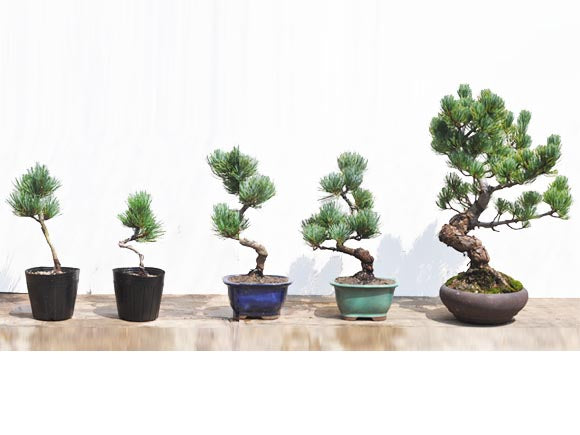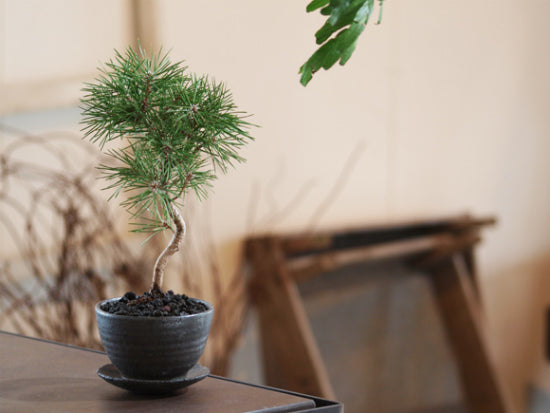The Bonsai styles
When you chose bonsai or when you train bonsai, styles matter. On this page you can learn the most basic styles of bonsai trees.
Formal upright (chokkan)
This form is a very common style of bonsai. This form occurs when the tree has grown exposed to lots of sunlight and place was opened and it did not have competing trees. The tree should be perfectly straight and tapered as well as trunk must be seen clearly. Blanches should be growing from about 1/4 of tree and spread symmetrically spaced.

Slanting (shakan)
This style occurs naturally when the tree has grown wind buffeting in one direction or when a tree grown in deep shadow and must be bend to the sunlight. The whole trunk leans in one direction at an angle of 60-80 degrees from ground. The roots grow out on one side to support the weight and keep tree standing.
Cascade style (kengai)
A tree on a steep cliff can bend the tips growing downwards by the cause of snow or falling stones. This can be difficult to maintain because it is oppose the natural force of growths. This style gives the impression of natural forces against the force of gravity. Trees this form should be planted in a tall pots.

Literati style (bunjin)
The tree with this form had grown in a place where there were a lot of competing trees and high dense. The trunk grows lopsidedly upward and it doesn’t have blanches near the ground. This kind of trees mostly placed in small and round pots.
Forest style (yoseue)
This style is composed of several different species. The most developed tree goes into the middle and smaller plants on the sides. This style often preformed in a big shallow pot.
Growing in a rock (ishitsuki)
Trees are growing in the holes of the rock. The trees in this form often seem unhealthy. It is important thing is to fertilize and water often.
Exposed root style (neagari)
In nature, the floods or mudslides wash away the soil around roots and expose them. They are often beaten by wind and turns into trunks. This is called neagari. Exposed roots can display three-dimensional design by nature and exhibit a deep harmony. This style is performed over a long period of time.



